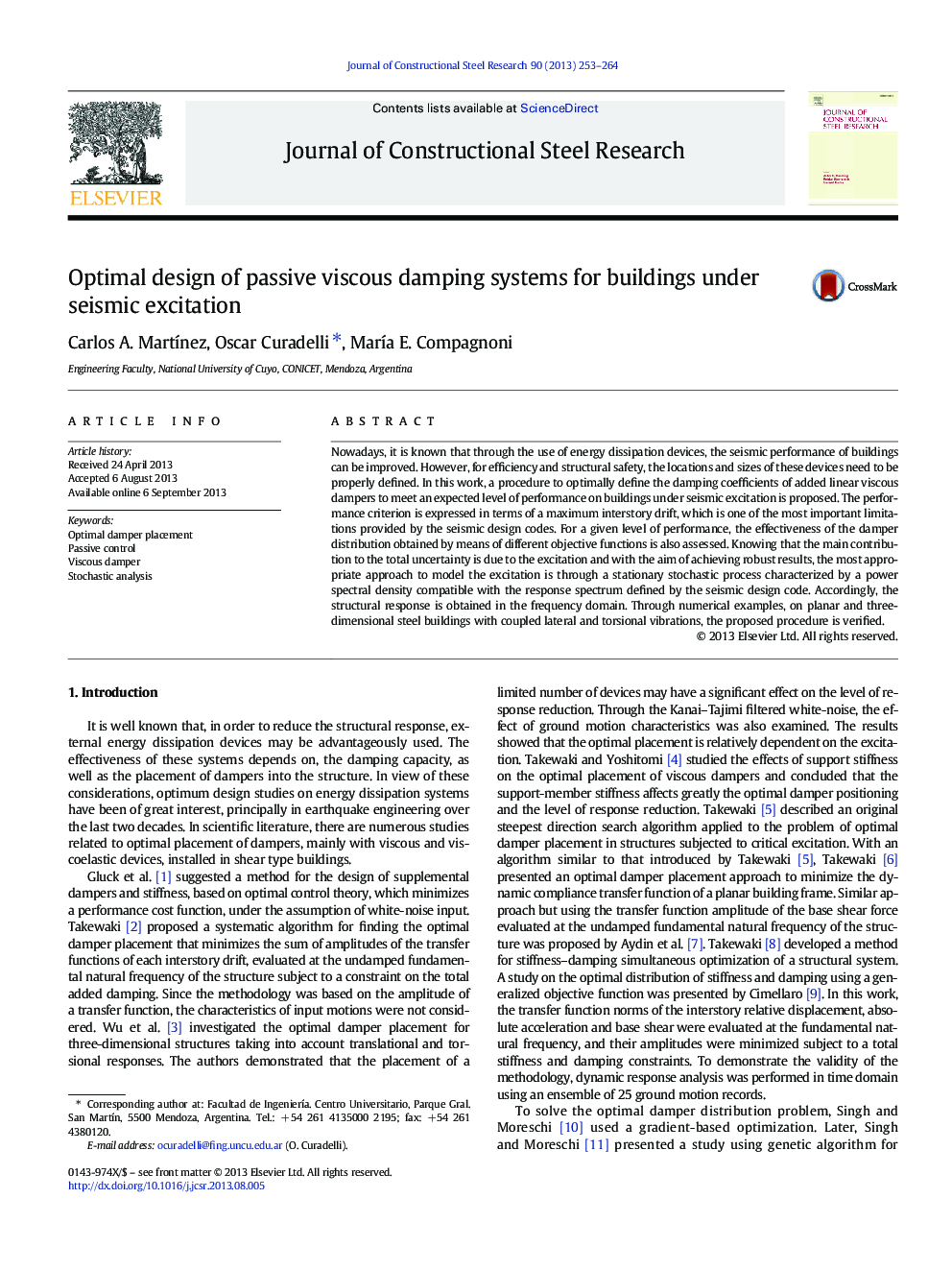| کد مقاله | کد نشریه | سال انتشار | مقاله انگلیسی | نسخه تمام متن |
|---|---|---|---|---|
| 284854 | 509167 | 2013 | 12 صفحه PDF | دانلود رایگان |

• Optimum design of linear viscous dampers in buildings under seismic excitation
• The performance criterion is expressed in terms of a maximum interstory drift.
• Excitation is modeled as a design spectrum compatible power spectral density.
• Efficiency of different objective functions is assessed.
• The proposed procedure is verified on 2D and 3D steel buildings.
Nowadays, it is known that through the use of energy dissipation devices, the seismic performance of buildings can be improved. However, for efficiency and structural safety, the locations and sizes of these devices need to be properly defined. In this work, a procedure to optimally define the damping coefficients of added linear viscous dampers to meet an expected level of performance on buildings under seismic excitation is proposed. The performance criterion is expressed in terms of a maximum interstory drift, which is one of the most important limitations provided by the seismic design codes. For a given level of performance, the effectiveness of the damper distribution obtained by means of different objective functions is also assessed. Knowing that the main contribution to the total uncertainty is due to the excitation and with the aim of achieving robust results, the most appropriate approach to model the excitation is through a stationary stochastic process characterized by a power spectral density compatible with the response spectrum defined by the seismic design code. Accordingly, the structural response is obtained in the frequency domain. Through numerical examples, on planar and three-dimensional steel buildings with coupled lateral and torsional vibrations, the proposed procedure is verified.
Journal: Journal of Constructional Steel Research - Volume 90, November 2013, Pages 253–264